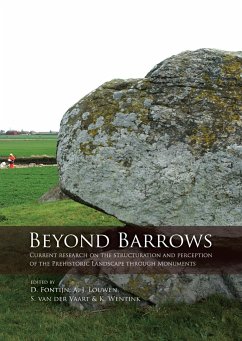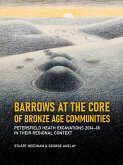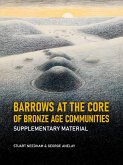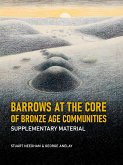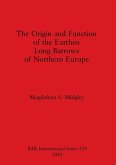Europe is dotted with tens of thousands of prehistoric barrows. In spite of their ubiquity, little is known on the role they had in pre- and protohistoric landscapes. In 2010, an international group of archaeologists came together at the conference of the European Association of Archaeologists in The Hague to discuss and review current research on this topic. This book presents the proceedings of that session. The focus is on the prehistory of Scandinavia and the Low Countries, but also includes an excursion to huge prehistoric mounds in the southeast of North America. One contribution presents new evidence on how the immediate environment of Neolithic Funnel Beaker (TRB) culture megaliths was ordered, another one discusses the role of remarkable single and double post alignments around Bronze and Iron Age burial mounds. Zooming out, several chapters deal with the place of barrows in the broader landscape. The significance of humanly-managed heath in relation to barrow groups isdiscussed, and one contribution emphasizes how barrow orderings not only reflect spatial organization, but are also important as conceptual anchors structuring prehistoric perception. Other authors, dealing with Early Neolithic persistent places and with Late Bronze Age/Early Iron Age urnfields, argue that we should also look beyond monumentality in order to understand long-term use of "ritual landscapes". The book contains an important contribution by the well-known Swedish archaeologist Tore Artelius on how Bronze Age barrows were structurally re-used by pre-Christian Vikings. This is his last article, written briefly before his death. This book is dedicated to his memory.Contents:Beyond Barrows - an introductionBy David FontijnInventions of Memory and Meaning - Examples of Late Iron Age Reuse of Bronze Age Monuments in South-Western SwedenBy Tore Artelius Part I (Beyond monumentality)Memorious Monuments. Place persistency, mortuary practice and memory in the Lower Rhine Area wetlands (5500-2500 cal BC)By Luc W.S.W. AmkreutzThe centrality of urnfields. Second thoughts on structure and stability of Late Bronze Age and Early Iron Age cultural landscapes in the Low Countries.By Roy van Beek and Arjan LouwenPart II (Orderings of funerary landscapes)Döserygg and Skegrie. Megalithic centres in south-west Scania, southern SwedenBy Magnus Andersson and Björn WallebomPost alignments in the barrow cemeteries of Oss-Vorstengraf and Oss-ZevenbergenBy Harry FokkensPart III (Zooming out: barrows in a landscape)Bronze Age barrow research in Sandy Flanders (NW Belgium): an overviewBy Jeroen De Reu and Jean Bourgeoishistory of open space. Barrow landscapes and the significance of heaths - the case of the Echoput barrowsBy Marieke DoorenboschWays of Wandering - In the Late Bronze Age Barrow Landscape of the Himmerland-area, DenmarkBy Mette LøvschalPart IV monument-building - an evolutionary approachThe Bet-Hedging Model as an Explanatory Framework for the Evolution of Mound Building in the Southeastern United StatesBy Evan Peacock and Janet Rafferty
Hinweis: Dieser Artikel kann nur an eine deutsche Lieferadresse ausgeliefert werden.
Hinweis: Dieser Artikel kann nur an eine deutsche Lieferadresse ausgeliefert werden.

